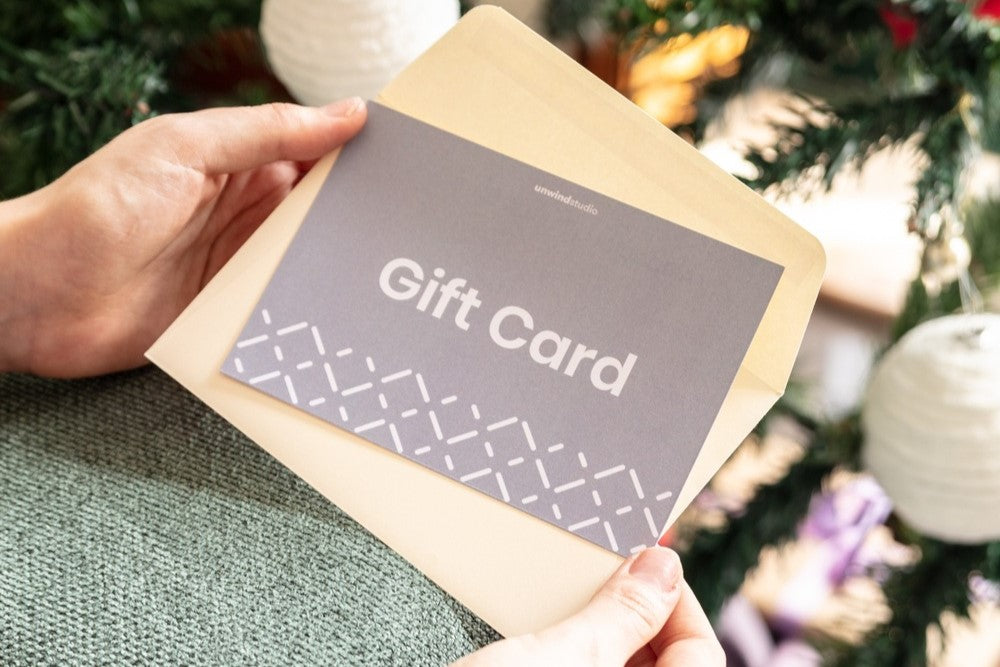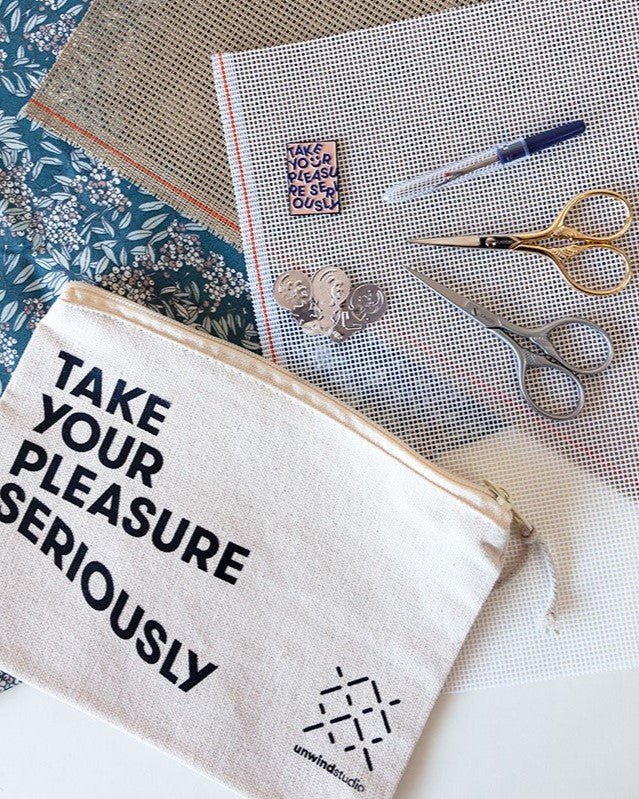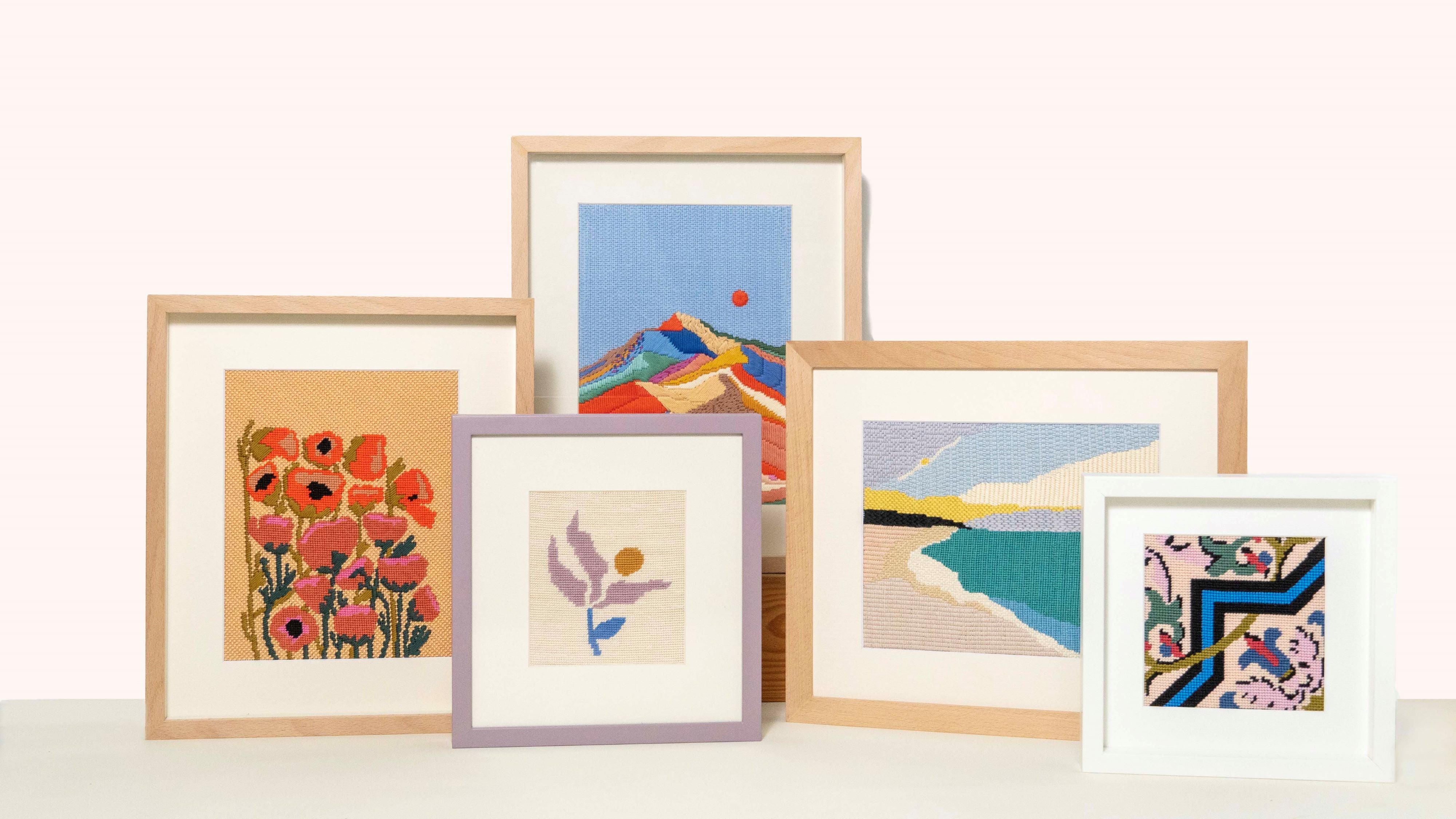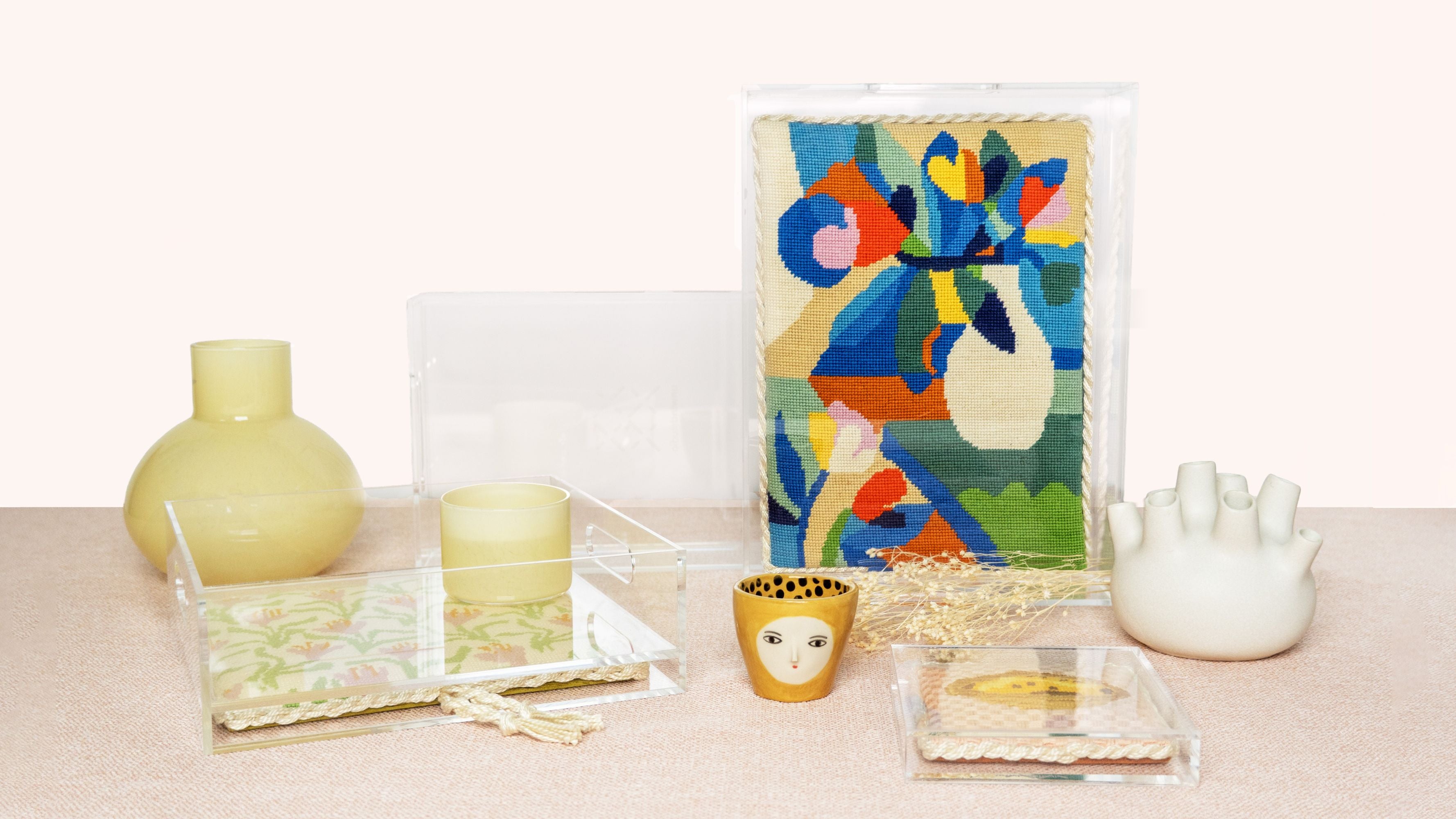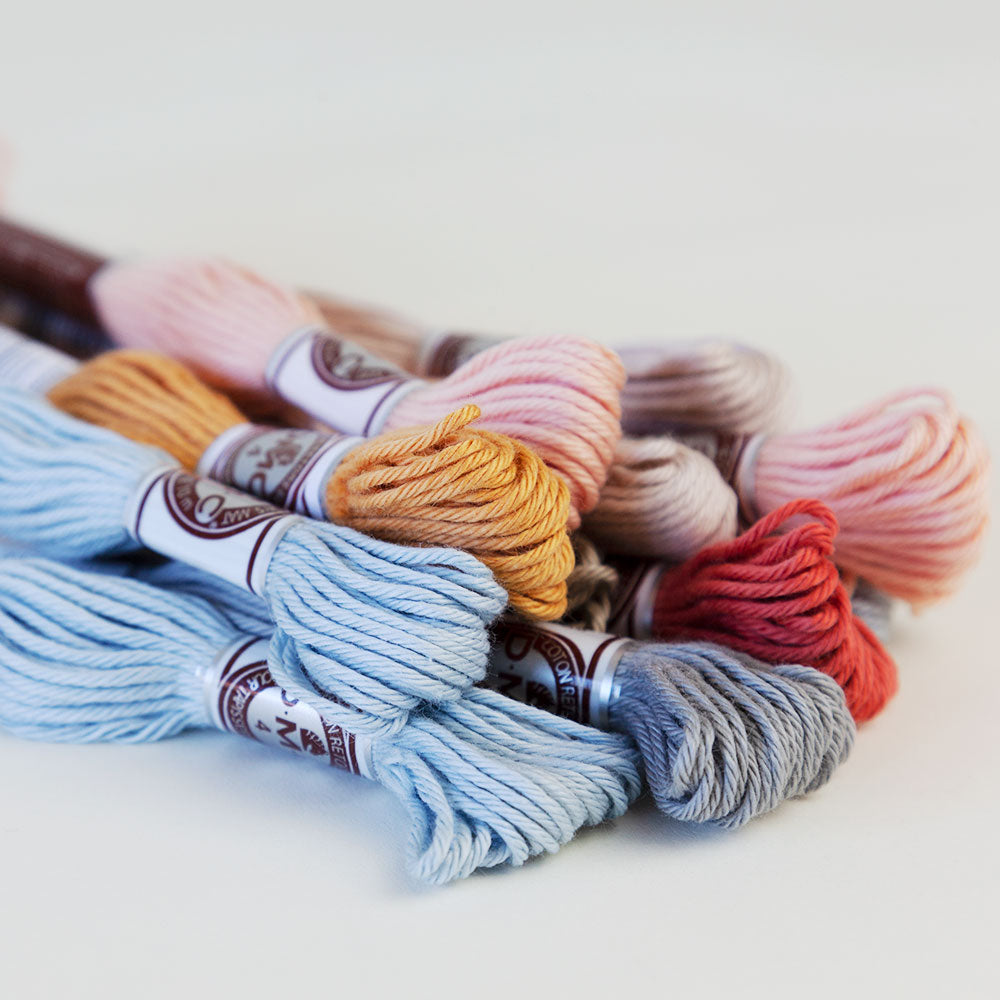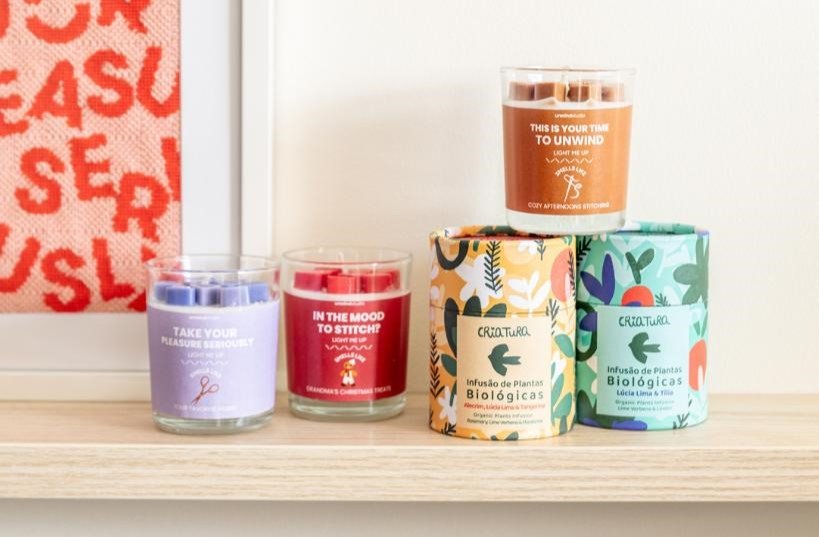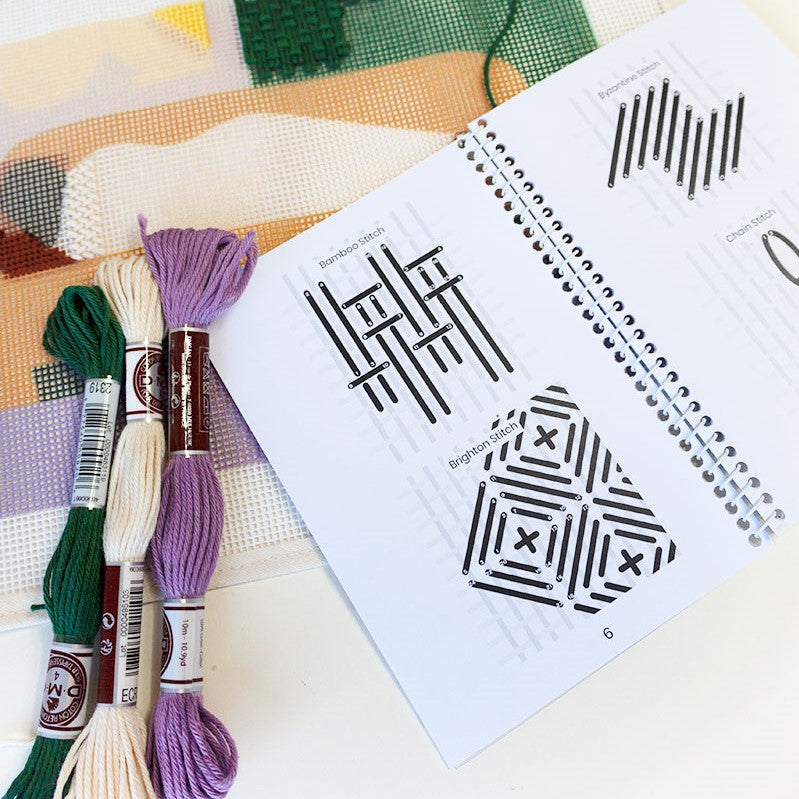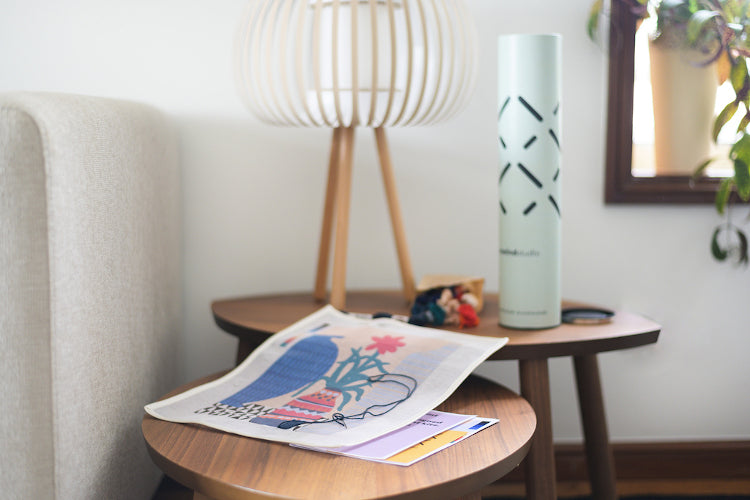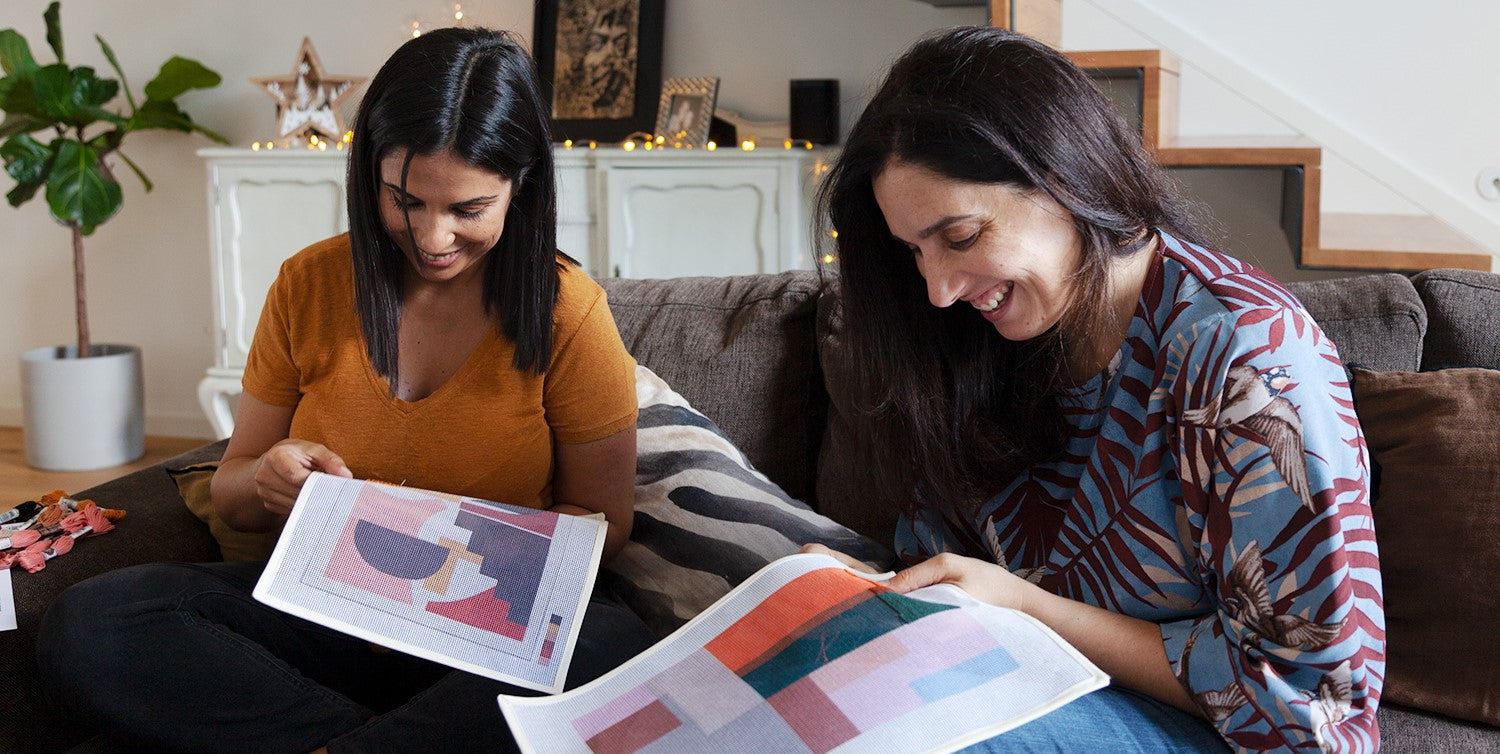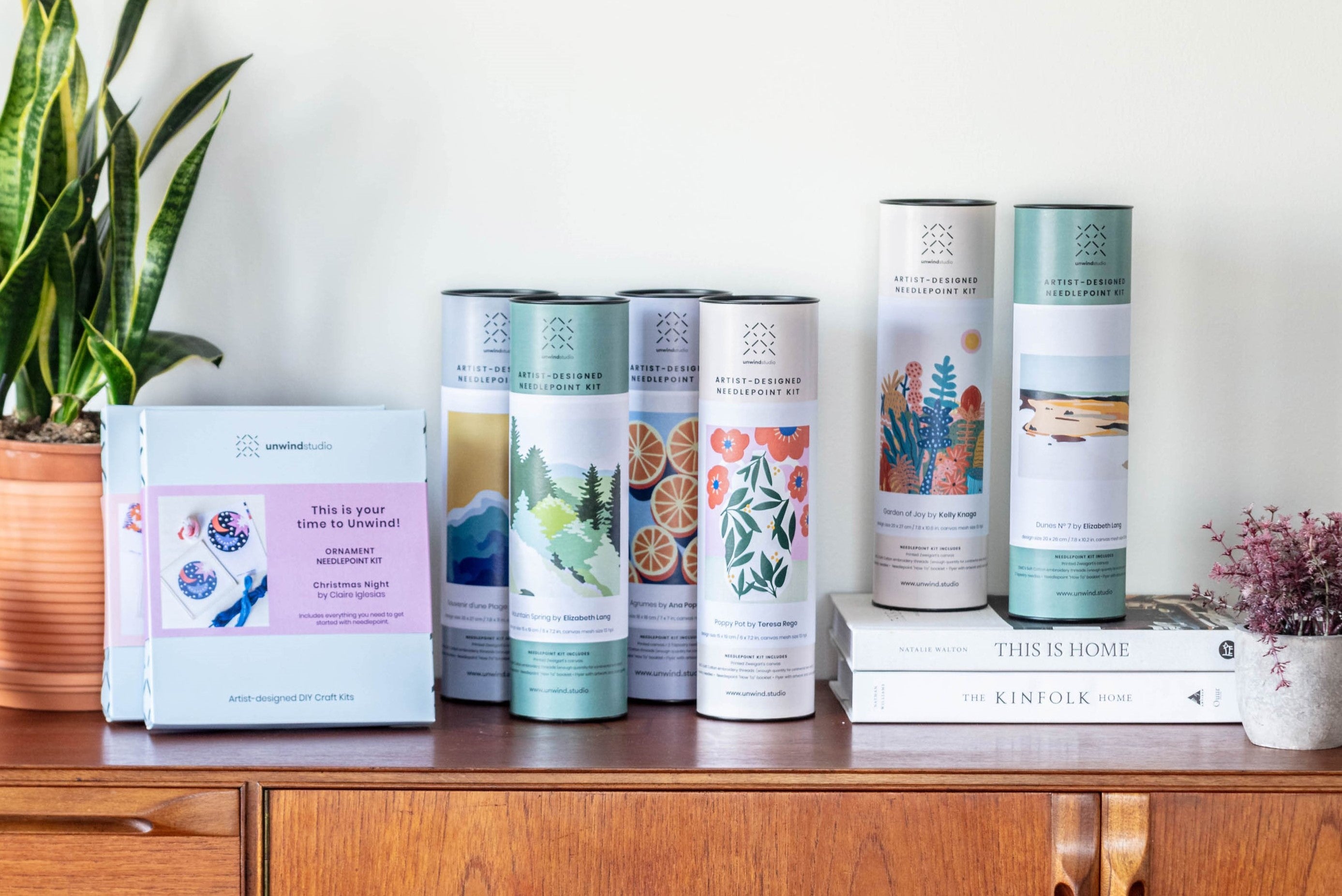How to Stitch A Needlepoint Printed Canvas
Needlepoint is a beloved form of handcraft that allows you to create beautiful and intricate designs on a canvas using colorful threads. While stitching a needlepoint canvas is usually straightforward, things can get a bit more challenging when dealing with intersections that have multiple colors.
In this blog post, we will guide you through the process of stitching a needlepoint canvas with color intersections, helping you achieve a stunning finished piece that showcases your needlework expertise.
What is a color intersection in Needlepoint?
A color intersection happens when a needlepoint canvas hole shares two colors, instead of having just one, making it hard sometimes to decide with which color to stitch. In the example highlighted below, we have intersections of both pink and orange in the same canvas holes, and we are going to teach you how to go about this doubt when stitching!

How to stitch multicolor intersections Video Tutorial - Beginner Needlepoint Canvas
If you're a beginner, we recommend you opt for beginner-friendly canvases, and watch this tutorial where we use our Sunny Sunday Beginner Needlepoint Kit as an example to help you out!
KEY TAKEAWAYS
- The decisions you will be faced with in the process really come down to 3 things:
- Personal taste
- The thread color you pick up first
- Coherence with the original design
How to stitch multicolor intersections Video Tutorial - Advanced Needlepoint Canvas
When it comes to more advanced needlepoint canvases, you can have some doubts about what decisions to make while working on your project.
We prepared this video tutorial using our Contemporary Floral Pattern Needlepoint Kit to help you understand some of the challenges you may face with a more intricate design:
- Understand the Needlepoint Pattern: Understanding the complexity of the pattern beforehand will save you time and prevent mistakes during the stitching process.

- We are going to start this flower by stitching this first line with the orange thread. In this stitch (1), the holes are mostly orange, but the next hole (2) is an intersection of orange and pink, so we decided to use orange to maintain the curve pattern.

- As you can see below, here the holes are completely pink (3), but the holes beside it (4) are an intersection again, and once more we decided to stitch it with orange to be coherent with our initial choice and with the design.

How to stitch color intersections in very small areas
Some designs might have little color intersections that are part of the artwork's details, this can be tricky, but we'll explain how to deal with it with our practical example.
Pro tip: It is preferable to stitch the smaller details first, especially if they are of a lighter color thread which can get stained by the darker ones!
Pro Tip n2: In this case, it is helpful to have the original art print to guide you.
- In this first small white area, it is clear that you can make two stitches, but it can be confusing in which holes to make the stitches, here we show the two options (5 or 6):

- This is how we decided to do it, but it is a totally personal choice!

- In this white area, the inclination of the design is opposite to the stitch direction (7). But you can continue stitching the same way you stitched the previous white areas (horizontal line), because it won't affect the output (8).

- Another option is to simulate the inclination by changing the second stitch position to obtain a diagonal line. (9) By doing this, we left a space between the white stitches, which would later be filled with orange.
- But since it could look a little weird and the two stitches appear to be separated, we can do an extra white stitch in the middle and create a "triangle" effect. (10)

- Now, you just have to follow the same criteria for the rest of the design and choose to stitch what will better resemble the original artwork, like so:

Different decisions, same beautiful result
- Starting with the green thread is easy here since the direction of the stitch follows perfectly the inclination of the design.

- Then, we are faced with another decision on color intersections: if we made the stitch on the middle intersection of colors at left (11), we would lose the round effect of the green circle.
- So we decided to not make the stitch in that intersection, and just start stitching the line above (12 & 13).

- You also need to pay attention to the design's "needs". Here we will have to make space for the pink that will be around the green center, so you'll have to anticipate the stitches you'll need to make with the pink thread.

- To maintain the circle, you can do an extra stitch. Here (14) we made it in the intersection that made the most sense to us. But if you were to do this second version (15), the circle would also look great in the end!

KEY TAKEAWAY:
Be consistent with the color choices in the intersections throughout the whole process, but also make decisions that make sense with the original design.
Before & After Printed Needlepoint Canvas

Other Examples of the Same Design:

As you can see, these are all very different approaches to the same design. So remember: no two needlepoint canvases will look the same when finished! That's part of the beauty of it, so don't stress it too much :)
In Conclusion...
Sometimes printed needlepoint canvases can be perceived as difficult or intimidating to stitch, but you can achieve stunning results with patience and practice, following what you think is best for your project and these tips we've put together. If you're curious to know more about the differences between printed canvases and hand painted, we have a dedicated blog post about the topic.
Printed canvases are an amazing option for craft enthusiasts thanks to the affordability factor! Needlepoint is an excellent hobby but it can also be expensive sometimes, so if you are interested in looking for more affordable options, take a look at our Guide to find affordable Needlepoint!
Happy Stitching**



